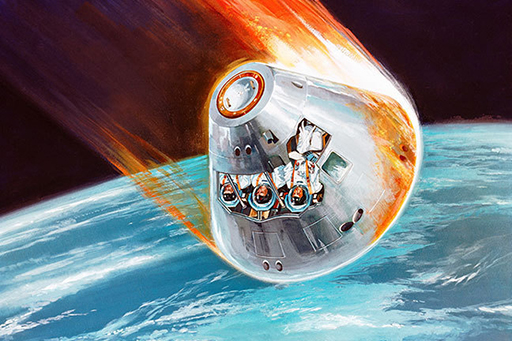3.1 Re-entry
As you saw earlier, objects such as hammers and feathers fall to Earth at different rates. The reason for the difference in rates of fall is air resistance. An additional factor is that because falling objects experience air resistance, then if they are travelling fast enough, they can heat up noticeably.
The Apollo command modules re-entered the atmosphere at more than 11 000 m s−1. During re-entry, the shock compression of the air in front of the spacecraft moving at such high speeds generated a great amount of heat (sometimes mis-described as ‘frictional heating’), with the outside surface reaching temperatures of up to 2800 °C. It took specially designed heat shielding to protect the astronauts inside from this inferno until they reached the lower part of the atmosphere where the command module’s huge parachutes were deployed.

